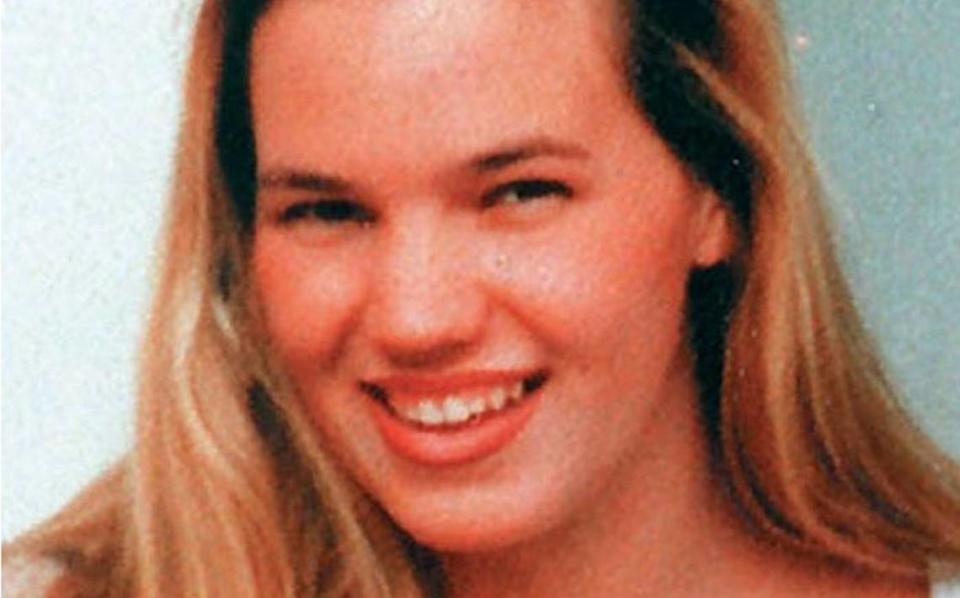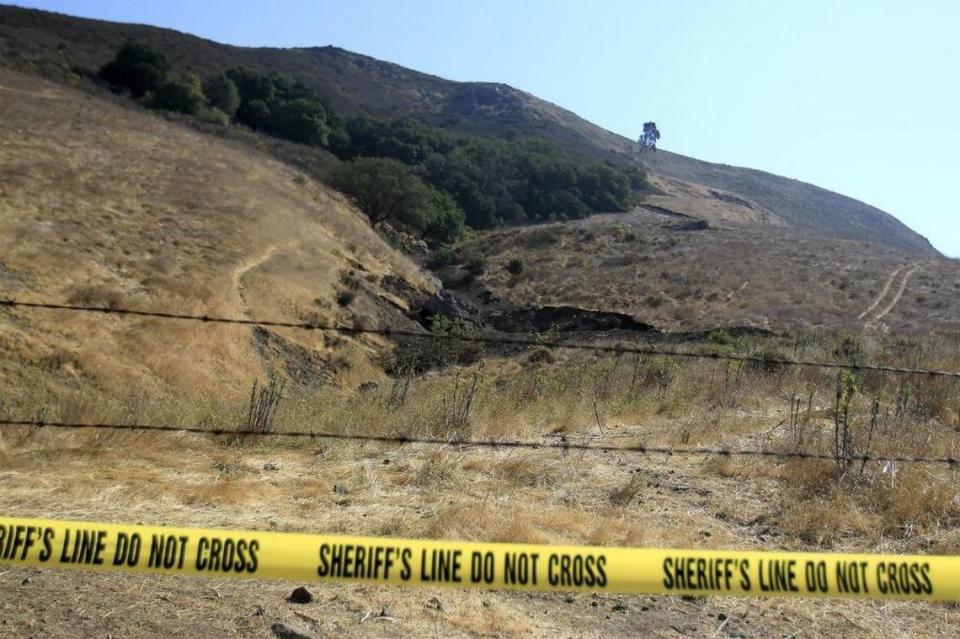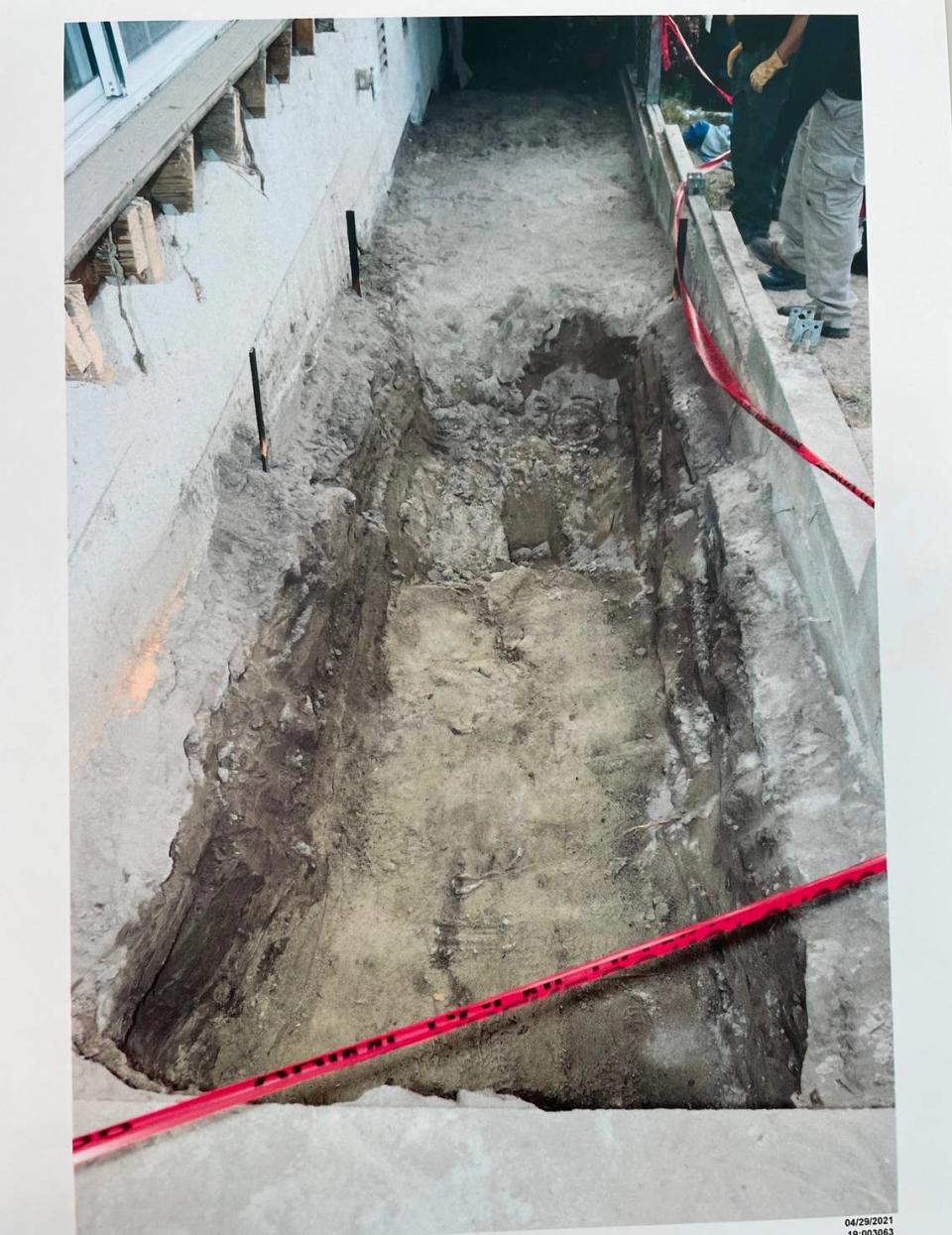Exclusive: How much did it cost to send Paul Flores to prison for murdering Kristin Smart?
- Oops!Something went wrong.Please try again later.
San Luis Obispo County spent more than $3 million to investigate and convict Paul Flores for murdering Kristin Smart, a Tribune review of financial records shows.
That includes money spent by both the county Sheriff’s and District Attorney’s offices over the course of nearly two decades.
And it’s not a full total, as not all of the money was tracked.
The San Luis Obispo County Sheriff’s Office only has itemized records since the 2004-05 fiscal year, and the District Attorney’s Office began tracking expenses in 2019.
San Luis Obispo Superior Court does not keep track of expenses for specific cases, court executive office Michael Powell told The Tribune in an email. Records also do not include any money spent by federal agencies, such as the FBI.
Smart’s disappearance after an off-campus Cal Poly party in 1996 shook the community, and Smart’s parents have said on multiple occasions law enforcement should have done more immediately after her initial disappearance.

Missteps early on in the investigation, such as Cal Poly Police Department waiting days before taking the matter seriously, led the case to become a long-running unsolved mystery.
The case was never considered cold by the Sheriff’s Office, which said it continued to work on the investigation over more than two decades.
Financial records confirm this, with resources being allocated to the case each year.
In total, the sum of tracked money spent on the case adds up to $3,036,298.
The San Luis Obispo County District Attorney’s Office tracked expenses from January 2019 through March 2023, for a total of $1,433,321 — $988,747 toward employee salaries and benefits and $444,684 on services and supplies.
The Sheriff’s Office spent $1,602,977 and 19,928 hours on the case between the January 2005 and April 2023.
Majority of money spent on investigation after 2010
The investigation into the Smart case unfurled in fits and starts over more than two decades.
And that fluctuation in activity is apparent in the financial records.
The fiscal year with the highest price tag was 2019-20 with $374,741 and 4,227 hours spent on the case, while the lowest was the 2007-08 fiscal year with $8,384 and 134 hours on the case.
Former San Luis Obispo County Sheriff Pat Hedges oversaw the investigation from 1998 to 2011, when Ian Parkinson was elected to office.
According to financial records, deputies worked 3,320 hours and spent $197,412 on the investigation from 2004 through 2010 when Hedges was in charge.
It should be noted that the records do not include the first six years Hedges was in office.
One of Parkinson’s campaign promises was to solve the Smart case. Now-retired San Luis Obispo County Sheriff’s Office Detective Clint Cole told The Tribune Parkinson was dedicated to the case and would “spare no expense” to solve it — even to buy a $5,618 car from Mexico that was connected to the Flores family.
In total, Parkinson’s office spent $1,405,565 investigating Smart’s murder. Deputies, detectives and other employees clocked a grand total of 16,608 hours working on the case.
The first year of Parkinson’s tenure, the Sheriff’s Office more than quadrupled the money and hours spent on the case versus the year before.
But the hours and spending did fluctuate, with money and hours skyrocketing to $205,107 and 2,112, respectively, in the 2016-17 fiscal year before falling to $14,651 and 174 the following year.
Expenses saw the biggest increase in 2019, when Cole began working the case. That same year, Chris Lambert began releasing episodes of his “Your Own Backyard” podcast, which law enforcement and the Smart family have credited with both helping put the case back in the national spotlight and bringing forth new witnesses.
From 2019 to 2023, $880,835 and 10,120 hours were spent on the case.
That’s more than 60% of the money and hours spent on the case under Parkinson, and more than 50% of the money and hours spent on the entirety of the case since the 2004-05 fiscal year.
More than $40,000 spent on forensics, records show
By far the largest expense in the Smart case was wages and salaries.
Altogether, the Sheriff’s Office paid its employees $1,447,687 for their work — $1,189,245 in regular pay, $250,392 in overtime pay and $8,050 in other pay.
Cal Poly Restoration — Public Works, was also paid $19,821 for 130 hours of work in the 2016-17 fiscal year, for expenses related to the 2016 dig at the Cal Poly “P.”

Negranti Construction, a Cayucos company that specializes in excavation and grading, also received $15,750 in the 2016-17 fiscal year.
DNA testing was the next biggest expense, adding up to $39,618 over the years. Serological Research Institute alone received $36,088 of it.
The institute tested the soil from Ruben Flores’ home and the mattress cover from Paul Flores’ dorm room in 1996, which had been kept in evidence for two decades. One of their top forensic DNA analysts, Angela Butler, testified at the trial that the soil tested positive for human blood. A “DNA mixture” found on Paul Flores’ mattress pad from his 1996 dorm room could or could not include Smart or Flores’ DNA, she said on the stand.
A plywood sample from the van of Mike McConville, Susan Flores’ boyfriend, was also tested by Butler, but it only found DNA for McConville.
Astrea Forensics LLC also was paid $3,100 for DNA testing, and Central Valley Toxicology was paid $430, though it is unclear what years they were paid. Hoslett Forensic also received $5,000, according to records, but the records do not indicate what for.
Natural Investigations Co., a Sacramento-based company that uses ground-penetrating radar, was paid $6,328 in the 2020-21 fiscal year.
Archaeologists Cindy Arrington and Phillip Hanes are both leaders at the company who testified in the trial. They said they were both present when investigators dug up Ruben Flores’ yard.

Hanes operated a ground-penetrating radar, which identified a soil anomaly the size of a grave, and Arrington supervised the excavation of that anomaly.
Arrington testified the staining found in the soil anomaly was consistent with a body that had been buried and moved after a period of time.
Travel throughout the case cost $30,405, with the majority occurring between 2018 and 2021.
The resources allocated to the case culminated in Paul Flores’ conviction for Smart’s murder, for which he is now serving a prison sentence of 25 years to life. His father, Ruben Flores, was acquitted of helping his son conceal the crime.

